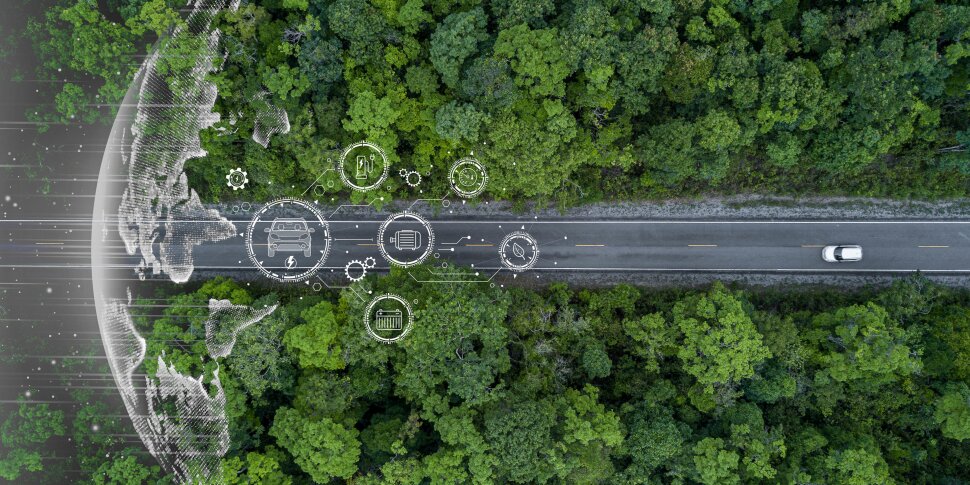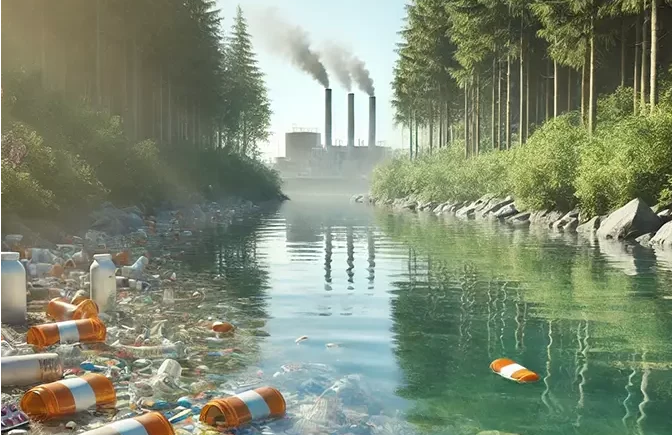Managing Disposable Face Mask Waste as Circular Economy Products through Life Cycle Assessment
Downloads
Doi:10.28991/HEF-2025-06-01-011
Full Text:PDF
Downloads
Idris, I. A., Nisamaneenate, J., Atong, D., & Sricharoenchaikul, V. (2024). A comprehensive study of facemasks pyrolysis using Py-GC/MS, kinetic analysis and ANN modeling. Arabian Journal of Chemistry, 17(3), 105605. doi:10.1016/j.arabjc.2024.105605.
Giungato, P., Rana, R. L., Nitti, N., Cavallari, C., & Tricase, C. (2021). Carbon footprint of surgical masks made in taranto to prevent sars-cov-2 diffusion: A preliminary assessment. Sustainability (Switzerland), 13(11), 6296. doi:10.3390/su13116296.
Un, C., Gentilcore, C., Ault, K., Gieng, H., Vozka, P., & Wang, N. H. L. (2023). Low-Pressure Hydrothermal Processing of Disposable Face Masks into Oils. Processes, 11(10), 2819. doi:10.3390/pr11102819.
Singh, N., Ogunseitan, O. A., & Tang, Y. (2022). Medical waste: Current challenges and future opportunities for sustainable management. Critical Reviews in Environmental Science and Technology, 52(11), 2000–2022. doi:10.1080/10643389.2021.1885325.
Wang, L., Li, S., Ahmad, I. M., Zhang, G., Sun, Y., Wang, Y., Sun, C., Jiang, C., Cui, P., & Li, D. (2023). Global face mask pollution: threats to the environment and wildlife, and potential solutions. Science of the Total Environment, 887, 164055. doi:10.1016/j.scitotenv.2023.164055.
Luo, Y., Yu, M., Wu, X., Ding, X., & Wang, L. (2023). Carbon footprint assessment of face masks in the context of the COVID-19 pandemic: Based on different protective performance and applicable scenarios. Journal of Cleaner Production, 387, 135854. doi:10.1016/j.jclepro.2023.135854.
Akber Abbasi, S., Khalil, A. B., & Arslan, M. (2020). Extensive use of face masks during COVID-19 pandemic: (micro-)plastic pollution and potential health concerns in the Arabian Peninsula. Saudi Journal of Biological Sciences, 27(12), 3181–3186. doi:10.1016/j.sjbs.2020.09.054.
Anastopoulos, I., & Pashalidis, I. (2021). Single-use surgical face masks, as a potential source of microplastics: Do they act as pollutant carriers? Journal of Molecular Liquids, 326, 115247. doi:10.1016/j.molliq.2020.115247.
Chen, Z., Zhao, Q., Chen, J., Mei, T., Wang, W., Li, M., & Wang, D. (2023). N-Halamine-Based Polypropylene Melt-Blown Nonwoven Fabric with Superhydrophilicity and Antibacterial Properties for Face Masks. Polymers, 15(21), 4335. doi:10.3390/polym15214335.
Kujawska, A., KieŠ‚kowska, U., Atisha, A., Yanful, E., & Kujawski, W. (2022). Comparative analysis of separation methods used for the elimination of pharmaceuticals and personal care products (PPCPs) from water – A critical review. Separation and Purification Technology, 290. doi:10.1016/j.seppur.2022.120797.
Hou, E. J., Hsieh, Y. Y., Hsu, T. W., Huang, C. S., Lee, Y. C., Han, Y. S., & Chu, H. T. (2022). Using the concept of circular economy to reduce the environmental impact of COVID-19 face mask waste. Sustainable Materials and Technologies, 33. doi:10.1016/j.susmat.2022.e00475.
Miah, M. J., Pei, J., Kim, H., Sharma, R., Jang, J. G., & Ahn, J. (2023). Property assessment of an eco-friendly mortar reinforced with recycled mask fiber derived from COVID-19 single-use face masks. Journal of Building Engineering, 66. doi:10.1016/j.jobe.2023.105885.
Tarigan, A. Y., & Effendi, A. J. (2024). Kinetic Study of Paracetamol Degradation with Advanced Oxidation Process (AOP) Combination of Ozone, Hydrogen Peroxide and Ultraviolet (O3/H2O2/UV). Jurnal Multidisiplin Madani, 4(4), 518–527. doi:10.55927/mudima.v4i4.8612.
Ranjbari, M., Shams Esfandabadi, Z., Gautam, S., Ferraris, A., & Scagnelli, S. D. (2023). Waste management beyond the COVID-19 pandemic: Bibliometric and text mining analyses. Gondwana Research, 114, 124–137. doi:10.1016/j.gr.2021.12.015.
Kicherer, A., Schaltegger, S., Tschochohei, H., & Pozo, B. F. (2006). Eco-efficiency. The International Journal of Life Cycle Assessment, 12(7), 537–543. doi:10.1065/lca2007.01.305.
Mount, E. M. (2017). Extrusion Processes. Applied Plastics Engineering Handbook, 217–264. William Andrew, Norwich, United Kingdom. doi:10.1016/b978-0-323-39040-8.00012-2.
Kumar, V., Gaurav, G., Khan, V., Choudhary, S., & Dangayach, G. S. (2023). Life cycle assessment and its application in medical waste disposal. Materials Today: Proceedings, 1-7. doi:10.1016/j.matpr.2022.12.255.
Gao, C., Gao, C., Song, K., & Fang, K. (2020). Pathways towards regional circular economy evaluated using material flow analysis and system dynamics. Resources, Conservation and Recycling, 154. doi:10.1016/j.resconrec.2019.104527.
Vieira, D. R., Calmon, J. L., & Coelho, F. Z. (2016). Life cycle assessment (LCA) applied to the manufacturing of common and ecological concrete: A review. Construction and Building Materials, 124, 656–666. doi:10.1016/j.conbuildmat.2016.07.125.
Douziech, M., Besseau, R., Jolivet, R., Shoai-Tehrani, B., Bourmaud, J. Y., Busato, G., Gresset-Bourgeois, M., & Pérez-López, P. (2024). Life cycle assessment of prospective trajectories: A parametric approach for tailor-made inventories and its computational implementation. Journal of Industrial Ecology, 28(1), 25–40. doi:10.1111/jiec.13432.
Kua, H. W., & Kamath, S. (2014). An attributional and consequential life cycle assessment of substituting concrete with bricks. Journal of Cleaner Production, 81, 190–200. doi:10.1016/j.jclepro.2014.06.006.
Bouillass, G., Blanc, I., & Perez-Lopez, P. (2021). Step-by-step social life cycle assessment framework: a participatory approach for the identification and prioritization of impact subcategories applied to mobility scenarios. International Journal of Life Cycle Assessment, 26(12), 2408–2435. doi:10.1007/s11367-021-01988-w.
Calvillo-Arriola, A. E., & Sotelo-Navarro, P. X. (2024). A step towards sustainability: life cycle assessment of coffee produced in the indigenous community of Ocotepec, Chiapas, Mexico. Discover Sustainability, 5(1), 17. doi:10.1007/s43621-024-00194-6.
Ajaj, R., Dweik, R. Al, Syed Ali, S. A., & Stietiya, M. H. (2023). Life cycle assessment studies to evaluate the sustainability of various facemasks used during COVID-19: A UAE case study. Journal of Environmental Chemical Engineering, 11(5), 110491. doi:10.1016/j.jece.2023.110491.
Abd Rashid, A. F., & Yusoff, S. (2015). A review of life cycle assessment method for building industry. Renewable and Sustainable Energy Reviews, 45, 244–248. doi:10.1016/j.rser.2015.01.043.
Weihong, H., Xinjiletu, Y., Bing, Z., & Yanli, Y. (2023). Research Methods and Application of Ecological Efficiency. International Journal of Economics, Finance and Management Sciences, 11(2), 82-86. doi:10.11648/j.ijefm.20231102.16.
Dai, Z. (2023). Impact of global warming on extreme hot and cold weather. Theoretical and Natural Science, 20(1), 78–82. doi:10.54254/2753-8818/20/20230724.
Stolle, L., Nalamasu, R., Rodenbeck, R., Davidson, K., Smarelli, C., Rosko, S., Wales, J., LeQuang, J. A. K., & Pergolizzi, J. (2021). Ozone: A Novel Sterilizer for Personal Protective Equipment. Cureus, 13(9), 18228. doi:10.7759/cureus.18228.
Suwanahong, K., Prasomjit, K., Jeenko, A., Wongcharoen, A., Detsutthikorn, P., & Chotikawin, R. (2020). Efficiency of a sterilizer machine for face masks using the advanced oxidation process. Proceedings of the TSHE 3rd National Conference on Environment: Healthy Environment in the Next Decade (2021-2030 A.D.), 18-19 November, 2020, Burapha University, Chonburi, Thailand.
Nabavi-Pelesaraei, A., Mohammadkashi, N., Naderloo, L., Abbasi, M., & Chau, K. wing. (2022). Principal of environmental life cycle assessment for medical waste during Covid-19 outbreak to support sustainable development goals. Science of the Total Environment, 827, 154416. doi:10.1016/j.scitotenv.2022.154416.
Yang, N., Zhang, H., Chen, M., Shao, L. M., & He, P. J. (2012). Greenhouse gas emissions from MSW incineration in China: Impacts of waste characteristics and energy recovery. Waste Management, 32(12), 2552–2560. doi:10.1016/j.wasman.2012.06.008.
Arifin, Z., Tamamy, A. J., Pamungkas, H., Mayasari, D. A., & Heryanto, M. A. (2022). Infaq Sterilization Box with UV and Ozone (BIUZ). Jurnal Nasional Teknik Elektro, 11(1), 50–53. doi:10.25077/jnte.v11n1.937.2022.
Battegazzore, D., Cravero, F., & Frache, A. (2022). Development of disposable filtering mask recycled materials: Impact of blending with recycled mixed polyolefin and their aging stability. Resources, Conservation and Recycling, 177. doi:10.1016/j.resconrec.2021.105974.
Fomina, S. F., & Stepanova, N. V. (2017). Non-carcinogenic risk for children population health in Kazan caused by food products and food raw materials contamination. Health Risk Analysis, 1, 42–48. doi:10.21668/health.risk/2017.4.04.eng.
Landrigan, P. J., Stegeman, J. J., Fleming, L. E., Allemand, D., Anderson, D. M., Backer, L. C., Brucker-Davis, F., Chevalier, N., Corra, L., Czerucka, D., Bottein, M.-Y. D., Demeneix, B., Depledge, M., Deheyn, D. D., Dorman, C. J., Fénichel, P., Fisher, S., Gaill, F., Galgani, F., ... Rampal, P. (2020). Human Health and Ocean Pollution. Annals of Global Health, 86(1), 151. doi:10.5334/aogh.2831.
Kumari, T., Ghosh, M., & Mukhopadhyay, R. (2024). The warming world and it's impact on phytopathogens and insects. International Journal of Research in Agronomy, 7(4S), 101–104. doi:10.33545/2618060x.2024.v7.i4sb.534.
Mosa, A., Selim, E. M. M., El-Kadi, S. M., Khedr, A. A., Elnaggar, A. A., Hefny, W. A., Abdelhamid, A. S., El Kenawy, A. M., El-Naggar, A., Wang, H., & Shaheen, S. M. (2022). Ecotoxicological assessment of toxic elements contamination in mangrove ecosystem along the Red Sea coast, Egypt. Marine Pollution Bulletin, 176, 113446. doi:10.1016/j.marpolbul.2022.113446.
Wang, J., & Azam, W. (2024). Natural resource scarcity, fossil fuel energy consumption, and total greenhouse gas emissions in top emitting countries. Geoscience Frontiers, 15(2), 101757. doi:10.1016/j.gsf.2023.101757.
George, A. M., Ansumana, R., de Souza, D. K., Niyas, V. K. M., Zumla, A., & Bockarie, M. J. (2024). Climate change and the rising incidence of vector-borne diseases globally. International Journal of Infectious Diseases, 139, 143–145. doi:10.1016/j.ijid.2023.12.004.
Yim, S. H. L., Li, Y., Huang, T., Lim, J. T., Lee, H. F., Chotirmall, S. H., Dong, G. H., Abisheganaden, J., Wedzicha, J. A., Schuster, S. C., Horton, B. P., & Sung, J. J. Y. (2024). Global health impacts of ambient fine particulate pollution associated with climate variability. Environment International, 186, 108587. doi:10.1016/j.envint.2024.108587.
Fu, L., Guo, Y., Zhu, Q., Chen, Z., Yu, S., Xu, J., Tang, W., Wu, C., He, G., Hu, J., Zeng, F., Dong, X., Yang, P., Lin, Z., Wu, F., Liu, T., & Ma, W. (2024). Effects of long-term exposure to ambient fine particulate matter and its specific components on blood pressure and hypertension incidence. Environment International, 184, 108464. doi:10.1016/j.envint.2024.108464.
Shen, Y. (2024). Mechanism analysis of toxic and side effects of chemicals on human body. Theoretical and Natural Science, 29(1), 184–189. doi:10.54254/2753-8818/29/20240772.
Woods, J. S., Damiani, M., Fantke, P., Henderson, A. D., Johnston, J. M., Bare, J., Sala, S., Maia de Souza, D., Pfister, S., Posthuma, L., Rosenbaum, R. K., & Verones, F. (2018). Ecosystem quality in LCIA: status quo, harmonization, and suggestions for the way forward. International Journal of Life Cycle Assessment, 23(10), 1995–2006. doi:10.1007/s11367-017-1422-8.
Wan, L., Liu, G., Cheng, H., Yang, S., Shen, Y., & Su, X. (2023). Global warming changes biomass and C:N:P stoichiometry of different components in terrestrial ecosystems. Global Change Biology, 29(24), 7102–7116. doi:10.1111/gcb.16986.
Hou, E. J., Hsieh, Y. Y., Hsu, T. W., Huang, C. S., Lee, Y. C., Han, Y. S., & Chu, H. T. (2022). Using the concept of circular economy to reduce the environmental impact of COVID-19 face mask waste. Sustainable Materials and Technologies, 33. doi:10.1016/j.susmat.2022.e00475.
Qiu, Y., Zhang, Y., Zhang, K., Xu, X., Zhao, Y., Bai, T., Zhao, Y., Wang, H., Sheng, X., Bloszies, S., Gillespie, C. J., He, T., Wang, Y., Chen, H., Guo, L., Song, H., Ye, C., Wang, Y., Woodley, A., ... Hu, S. (2024). Intermediate soil acidification induces highest nitrous oxide emissions. Nature Communications, 15(1), 2695. doi:10.1038/s41467-024-46931-3.
Ramasamy, R., & Subramanian, R. B. (2023). Recycling of disposable single-use face masks to mitigate microfiber pollution. Environmental Science and Pollution Research, 30(17), 50938–50951. doi:10.1007/s11356-023-25851-7.
Mahbub, P., & Duke, M. (2023). Scalability of advanced oxidation processes (AOPs) in industrial applications: A review. Journal of Environmental Management, 345, 118861. doi:10.1016/j.jenvman.2023.118861.
Tee, M. L., & Cruz, D. E. (2022). A Vehicle Routing Problem in Plastic Waste Management Considering the Collection Point Location Decisions. 2022 IEEE International Conference on Industrial Engineering and Engineering Management (IEEM), 551–555. doi:10.1109/ieem55944.2022.9989979.
Yin, L., & Liu, J. (2023). Impact of Environmental Economic Transformation Based on Sustainable Development on Financial Eco-Efficiency. Sustainability (Switzerland), 15(1), 856. doi:10.3390/su15010856.
- The authors retain all copyrights. It is noticeable that authors will not be forced to sign any copyright transfer agreements.
- This work (including HTML and PDF Files) is licensed under a Creative Commons Attribution 4.0 International License.














